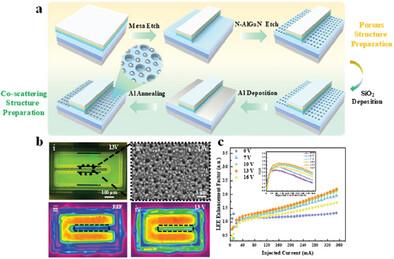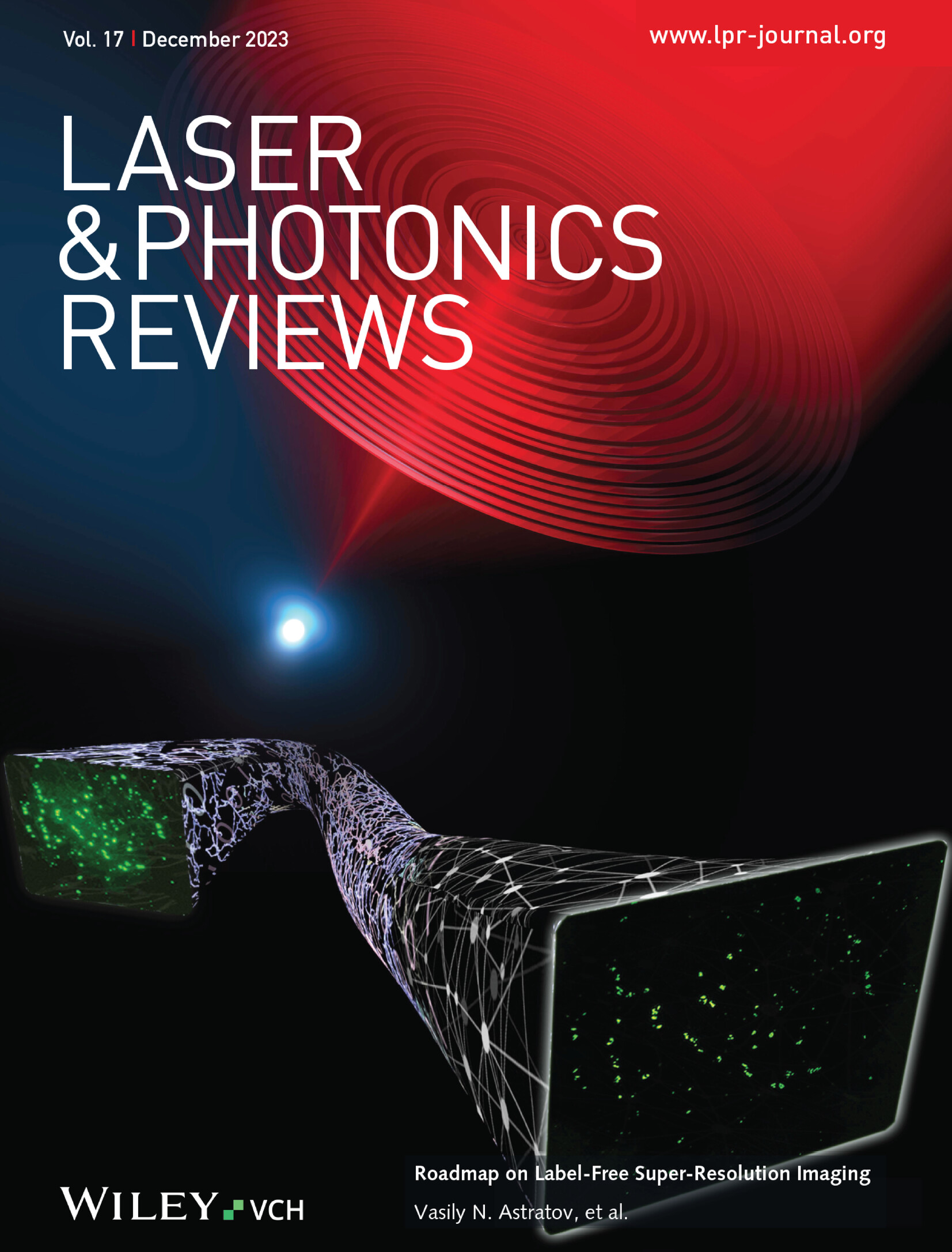Enhancement of Light Extraction Efficiency in AlGaN-Based Deep Ultraviolet Light-Emitting Diodes Using Cooperative Scattering Structures on the n-AlGaN Layer
IF 9.8
1区 物理与天体物理
Q1 OPTICS
引用次数: 0
Abstract
The efficiency of AlGaN based deep ultraviolet light-emitting diode (DUV LEDs) are mainly hindered by the light extraction issue. In this work, an innovative cooperative scattering structure is introduced that combines a nanopore configuration with an aluminum (Al) nanoparticle array on the n-AlGaN layer of the DUV LEDs. The integration of these two scattering arrays can enhance light extraction by mitigating total internal reflection at the device interface. The nanopores are formed on the n-AlGaN surface by electrochemical etching and optimized by varying the etching voltage, while the Al particles are formed by thermal annealing. With the help of the cooperative scattering structure, the light output power (LOP) of the optimized DUV LEDs is significantly increased by 77.6% and a notable 2.2 times is achieved in its light extraction efficiency (LEE) enhancement factor. Moreover, Finite-Difference Time-Domain (FDTD) simulations have validated that the cooperative scattering structure considerably enhances the LEE for both Transverse Electric (TE) and Transverse Magnetic (TM) modes, respectively. This work paves the way to fabricate high efficiency DUV LEDs via novel scattering structure designs.

求助全文
约1分钟内获得全文
求助全文
来源期刊
CiteScore
14.20
自引率
5.50%
发文量
314
审稿时长
2 months
期刊介绍:
Laser & Photonics Reviews is a reputable journal that publishes high-quality Reviews, original Research Articles, and Perspectives in the field of photonics and optics. It covers both theoretical and experimental aspects, including recent groundbreaking research, specific advancements, and innovative applications.
As evidence of its impact and recognition, Laser & Photonics Reviews boasts a remarkable 2022 Impact Factor of 11.0, according to the Journal Citation Reports from Clarivate Analytics (2023). Moreover, it holds impressive rankings in the InCites Journal Citation Reports: in 2021, it was ranked 6th out of 101 in the field of Optics, 15th out of 161 in Applied Physics, and 12th out of 69 in Condensed Matter Physics.
The journal uses the ISSN numbers 1863-8880 for print and 1863-8899 for online publications.

 求助内容:
求助内容: 应助结果提醒方式:
应助结果提醒方式:


